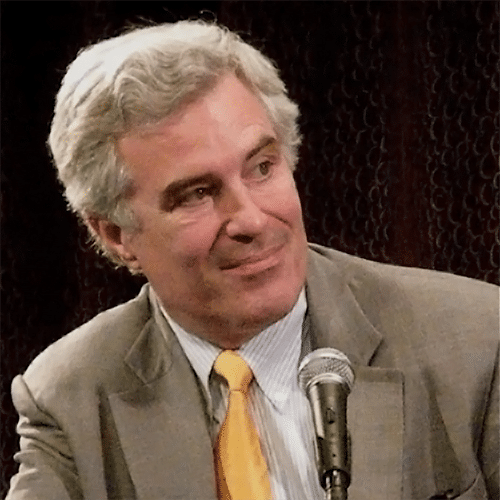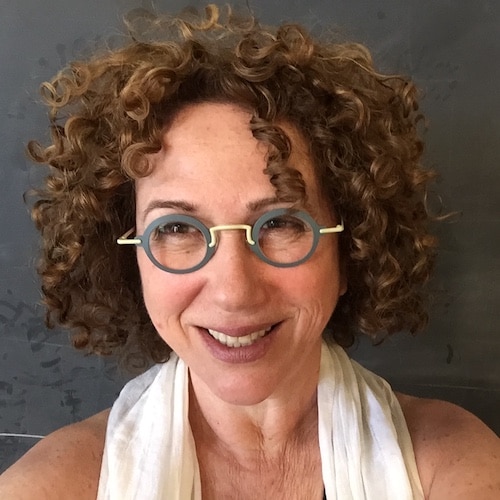
Green builder, Scott Flynn, co-founded indieDwell with Pete Gombert four years ago “to change the building industry by offering high quality, sustainable and healthy homes to underserved communities.” In the early 1990s, Scott worked as a carpenter’s apprentice building and remodeling homes, and even after he graduated from college as a chemical engineer, he continued to do building projects on the side. In 2001, Scott set up shop full-time, as Flynner Homes, a design-build firm based in Boise, Idaho, where indieDwell is also based. There, he was an early pioneer in the construction of high-performing, certified green homes, including at least two net-zero homes.
IndieDwell’s mission is to produce similarly sustainable houses, with a smaller footprint, that everyone on the income spectrum could afford. They work with developers or local organizations that can develop housing with an emphasis on creating mixed income, place-based communities. The first half of indieDwell’s model is about embracing modular construction, creating components in factory that then can be assembled on site. The second half of indieDwell’s model involves partnering with local communities to create employee owned/joint venture factories that produce housing for that community and region. They have already opened a second facility in Pueblo, CO, and they are in discussion with communities in Northern and Southern California, Virginia and Florida.
indieDwell’s innovative approach has received support from the Chan Zuckerberg Initiative, Enterprise Community, and a number of both financial, civic and philanthropic organizations. Scott, himself, is a Certified Green Builder, and both his companies have earned B Corp recognition.
Insights and Inspirations
- It took months to manufacture their first home. Now IndieDwell is manufacturing 2 homes per week per line. With 5 lines in place, and more planned, the number of homes is growing.
- IndieDwell is an employee-owned B-Corp. People are at the heart of everything Scott does.
- Containers are complicated to build into homes. In a few months, IndieDwell will be moving to steel-studded framed systems for their modular homes.
- IndieDwell sells their modular homes to like-minded organizations to ensure that the end-user gets the full-benefit of their carefully planned modular homes.
Information and Links
- Scott likes B Corp.
- He likes to listen to the Simon Sinek podcast.
- And he wants to point out the great resource that is the Greater Good Science Center, at UC Berkeley.
Read the podcast transcript here
Eve Picker: [00:00:13] Hi there. Thanks so much for joining me today for the latest episode of Impact Real Estate Investing. My guest today is Scott Flynn, chief impact officer for indieDwell. Scott founded and ran indieDwell for four years, growing it from a one per quarter modular home manufacturing company to 10 per week. And it keeps on growing with joint venture manufacturing facilities planned all over the country. For indieDwell, the focus has been on affordable modular homes made from recycled shipping containers, although that is about to change. Be sure to go to EvePicker.com to find out more about Scott on the show notes page for this episode, and be sure to sign up for my newsletter so you can access information about impact real estate investing, and get the latest news about the exciting projects on my crowdfunding platform, Small Change.
Eve: [00:01:23] Hello, Scott. I’m really pleased to have you on my show today.
Scott Flynn: [00:01:27] It’s a pleasure to be here, Eve.
Eve: [00:01:28] You build tiny, affordable homes in Boise, Idaho. And I wanted you to tell us how, how do you do that?
Scott: [00:01:37] Well, it’s much bigger than just Boise, Idaho. I mean, we’re starting to scale this across the country. We’re scaling our impact with factories, with partners, factories across the country. Just to be clear, we don’t build tiny homes. We build modular homes.
Eve: [00:01:57] Umhmm.
Scott: [00:01:57] So, you know, for just some background here, the difference between a modular and a manufactured home, there’s a big difference. So, a manufactured home is built to lower quality codes, and that’s where you get the trailer homes and the mobile homes come into that category.
Eve: [00:02:17] Ok.
Scott: [00:02:17] But a modular is the same as a site-built stick-built home. It goes on a permanent foundation. It appreciates with the market. That’s the big thing here, the difference between these two.
Eve: [00:02:30] Umhmm.
Scott: [00:02:30] A manufactured home is considered personal property, so it depreciates over time.
Eve: [00:02:35] Kind of like a recreational vehicle.
Scott: [00:02:37] It’s exactly the same …
Eve: [00:02:39] Ok.
Scott: [00:02:39] Yes. But we build modular, so it’s real property and therefore it appreciates with the market. And therefore, when you can get anybody into one of these homes, say, the underserved or the left behind, so to speak, they can start to build wealth.
Eve: [00:02:58] And you’re doing that using shipping containers.
Scott: [00:03:02] That’s true. Yes. We started this five, about four and a half years ago now, the idea came into my head and it just seemed like the right thing to be building with. And, you know, we’re not builders, we’re manufacturers, so, you know, there was 50 million shipping containers in the world. And now there’s well, more than that. And half of them are sitting around being decommissioned, but still have the structural integrity in them, and I thought, wow, they’re, the structure’s there. It’s a resource. It’s doing nothing. You can put them on flatbeds easy and ship them around. So, that’s what we started building with.
Eve: [00:03:49] And that’s amazing recycling story, right? Are you still building with shipping containers?
Scott: [00:03:55] We are. But I will let you know we are starting to phase out of them in about four to six months. We realize that they’re extremely hard to work with.
Eve: [00:04:08] Interesting.
Scott: [00:04:08] Yeah, they’re really complicated. Especially when you get into a commercial-type project where you have more restrictive codes. You’ve got fire codes you have to comply with, and boy, it can really become challenging. And, you know, we’re in the business to put as many people in homes as possible, not try and build with the most complicated thing. Shipping containers are extremely difficult to work with, especially when you’re doing a commercial project, so that means, you know, a multi-family, multi-story project. And it’s, you know, we’re not in the business to prove that we can build the most complicated home. We’re in the business to put good citizens into a high quality, healthy home. And so, we are in the process of switching into a steel studded frame system. So, the story is still there.
Eve: [00:05:12] Right.
Scott: [00:05:12] It’s still steel screwed to steel. And there’s still high performance and energy efficient and durable and sustainable, and healthy. It’s just going to be packaged in a way that where, it’ll just make our lives easier and we’ll have more homes.
Eve: [00:05:29] Right. Right. So, a little more efficient to build. And what about cost-wise? Because I think, you know, these sound like they’re pretty affordable homes.
Scott: [00:05:39] Yes. I mean, the new product will actually lower the price even more. Our base model is a 640 square foot, two bedroom, one bath, large kitchen and living room. We’re offering that at 85,000 dollars. You still have to have your land, and then you put in foundation.
Eve: [00:05:59] Right.
Scott: [00:06:00] But depending on where you are in the country, you could be on the ground for 100,000, plus your land.
Eve: [00:06:09] Yeah. You know, I built a tiny house in Pittsburgh and that’s pretty well, what it cost me was a bit smaller, but the land was the killer because it was on vacant city land and that was an old basement for the house in the land. And we had to dig it out and remediate it. And that cost more than the actual house.
Scott: [00:06:30] Yes, that’s typically the case.
Eve: [00:06:33] Yeh, so you have to pick your land carefully, right? It’s great that you’re evolving and with the goal of keeping prices down. And what do these homes look like? You said there’s a typical, did you say two bedroom, one bathroom … or was it one bedroom, one bathroom house?
Scott: [00:06:50] The base model is two bedrooms. One bath.
Eve: [00:06:53] Ok.
Scott: [00:06:53] Has a full shower.
Eve: [00:06:54] Yes.
Scott: [00:06:55] And then it has a large kitchen area, and that leads right into the living room. So, when you walk in the home, you walk right into this 16 foot wide, 20 foot deep space that has your living room and kitchen in it. It feels very homey.
Eve: [00:07:15] Mmhmm. And what happens if someone wants extra bedrooms? How do they add them on?
Scott: [00:07:20] We just add another container onto it. We can get up to four bedroom, two bath.
Scott: [00:07:24] Ok, so that’s pretty, pretty simple. And when you do the steel frame system, you’ll have a little bit more flexibility, right?
Scott: [00:07:33] Yes. We’ll be able to go a little bit wider. So, we’re still deciding between a 12 and 14 foot module, but it’ll make a world of difference.
Eve: [00:07:43] Ok, and who do you sell these to? I was reading that you only sell to organizations, not to individuals.
Scott: [00:07:50] Yeah, our goal is to partner with like-minded developers, foundations, possibly other builders. We go through so much effort to build a product that is high performance and healthy, and a business culture that comes along with that, and capping our margins. We haven’t talked about that yet. We cap our margins to keep our pricing down.
Eve: [00:08:19] Mm hmm.
Scott: [00:08:21] And what we want to do is work with partners that are going to take the product from us and continue that impact all the way to the end customer. We don’t want somebody coming in along the way and taking that margin that we worked so hard to keep down.
Eve: [00:08:44] Yes.
Scott: [00:08:45] So, that’s why it’s really important for us to align with like-minded people.
Eve: [00:08:51] So, what sort of organizations have purchased these so far? And I suppose they’re purchasing them in bulk. So, who lives in the homes? Today?
Scott: [00:09:01] Our first two, and we’re heading into our third and fourth with them, is a charity. LEAP charities, led by Bart Cochran. And Bart did something amazing. He built the first ‘extremely affordable,’ so, we’re talking 30 percent AMI, with the most underserved group of people in this country, with healthy, high performance homes. And then he made the community net zero energy by putting solar panels on all the roofs. So, he has demonstrated the ultimate community is possible, that we can build high performance, healthy communities and serve everybody in the income spectrum. It’s beautiful. And so, we did a small community with him called Windy Court One. He built a Windy Court Two right next to it. So, he even made the community bigger, you know. Right across the street, he’s putting in, I believe it’s a 12-block subdivision. And you can see he’s just going to grow off of this.
Eve: [00:10:11] Mm hmm.
Scott: [00:10:12] That’s the like-mindedness that we do our darndest to connect with.
Eve: [00:10:19] And so where else in the country, like what other organizations are you connecting with?
Scott: [00:10:24] Well, some of the biggest names are Chan Zuckerberg Initiative, are you familiar with Chan Zuckerberg?
[00:10:31] Um Hmm, yes.
[00:10:31] Yeh, so they’re one of our partners. Northern Trust, Gary Community Investments out of Colorado. Enterprise. And there are several more.
Eve: [00:10:44] So, it sounds like you’re going to explode …
Scott: [00:10:46] Well …
Eve: [00:10:47] … building these little things.
Scott: [00:10:47] We have our second factory in Pueblo, Colorado, and it’s actually four times the size of our first factory here in Boise. You know, our first factory is 20,000 feet. It only has one line in it. It’s more of like our R&D line, as we like to say. But Pueblo is 100,000 square feet with four lines. And that’s what we are modeling all of our factories off of. And we have a minimum of four to six other partners that are inches away from pulling triggers in Northern California, Southern California, Virginia and Florida. And others on the way.
Eve: [00:11:38] So, with all these joint venture factories, like right now, how many of these homes are you manufacturing, and how big do you hope your production numbers will grow?
Scott: [00:11:49] Well, right now, it’s estimated that each line will produce about four modules a week, which is on the low side. And if you scale that across eight to 10 factories, that’d be about eight to ten thousand modules a year, which would be equal to about an average of, say, so half that. You start to put modules together, you know, four to five thousand homes.
Eve: [00:12:20] That’s pretty good.
Scott: [00:12:22] Yeah.
Eve: [00:12:24] What’s the biggest challenge you have in scaling like this?
Scott: [00:12:29] It’s actually scaling the business. It’s scaling the the inner workings and the processes and procedures of all of this, you know, as it scaled? That seems to be our biggest challenge. Here’s the amazing thing. We have zero dollars in outbound sales marketing. Zero. We have over 700 million dollars in our sales pipeline.
Eve: [00:12:57] Wow.
Scott: [00:12:58] So the sales and the inbound traffic is not the problem. There’s no problem there. Our product is in high demand. It’s just getting all of the inner workings to flow a little bit better as we scale. But typical, I mean, this is the definition of, you know, a startup and scale.
Eve: [00:13:25] Mm hmm. So what led you to start indieDwell.
Scott: [00:13:27] Oooo. Love this question. I’ve been in the construction industry for approaching 30 years and the last, well, starting in like 2003, I actually left my engineering career. I was a, I was a chemical engineer, for my passion in building and homes and architecture. And I started my own company, name of that company, Flynner Design and Build. And that company became the Boise Valley’s, you know, green builder. Healthy, high performance custom homes. And I, because I coupled my passion for design and architecture and construction with chemical engineering, which is heat energy and mass transfer. Well, that’s what a home does. A home is constantly transferring heat, energy and mass. And that’s at the core of energy efficiency and comfort. That’s what it is. And that’s what drew me into becoming a net zero energy builder, and just known as a green builder. The Flynner Homes cater to say the top 10 percent. Right? I put a question on myself, what would it take to put everybody on the income spectrum into a Flynner home? And that’s where IndieDwell came out of that question. And I had to figure out how to disrupt the typical construction business in ways to make that work, and one of them was how we incorporate as a corporation. We became a public benefit corporation. And really, that’s the heart of everything here. It’s, you know, typical corporations are inherently bound to maximize profits for its shareholders. That’s its job. A public benefit corporation, we’re still a for profit company, so it’s still business 101 at its core, but we are here to maximize our impacts on all of our stakeholders, just not our shareholders. And so when we look at it through that lens, it just opens our eyes to all of the possibilities of what business can have on impacting society and the environment positively. And that’s what’s brought us here today.
Eve: [00:16:06] That’s pretty great. You know, my husband also got a background in chemical engineering, but he ended up becoming a philosopher of science instead.
Scott: [00:16:14] Well, we could talk that, too, if you want, but …
Eve: [00:16:18] So, careers are meandering, aren’t they? And everything you learn is useful in the end. And so, like, how long did it take you to produce your first ten homes?
Scott: [00:16:32] Oh, my gosh, this is starting a manufacturing process from scratch …
Eve: [00:16:40] I can only imagine.
Scott: [00:16:41] … isn’t the most efficient thing today. We measure our throughput in days. You know, how many modules can we get through a day. I think when we first got started, it was almost two and a half years ago, it was how many weeks, if not months, I think it could be months, to get the first …
Eve: [00:17:01] Yeah.
Scott: [00:17:01] … home through.
Eve: [00:17:03] Yeah.
Scott: [00:17:04] And I mean, you just look at our efficiency curve and we’re being close to where we want it to be.
Eve: [00:17:10] That’s fantastic. What’s your big, hairy, audacious goal then?
Scott: [00:17:16] Oh, it’s really to demonstrate that when you put all of your stakeholders first. All of them. That not only are you more satisfied, but everybody you touch is fulfilled. Right? And so, you don’t have to be a manufac …, you could build any widget or have any service to have a company that impacts every person and place and thing’s life in a positive way.
Eve: [00:17:55] I mean, that’s an interesting statement because, you know, I think that’s probably the difference you’re talking about between a public benefit organization and a regular corporation, because most people would have a goal, like 50,000 homes a year. But your goal is to put people first, right?
Scott: [00:18:17] Yes. And when you do that, all of the metric goals come out of that.
Eve: [00:18:24] Yes.
Scott: [00:18:24] Right. But this is the, this is the foundation, the human connection, the, that creates all of those metrics.
Eve: [00:18:37] Yeah. So, just shifting gears a tiny bit. Are there any current trends or innovations in construction or real estate development that you think are really important for our future?
Scott: [00:18:51] Well, being a building scientist, because I can couple my engineering with construction. So as far as assemblies go, is understanding how to use less material and achieve the same outcome. For instance, our container home, we’ve got, it’s what is known as a double thermal break. It means that …
Eve: [00:19:16] Mm Hmm.
Scott: [00:19:16] … it’s hard for energy to get insi … from outside and in, and inside and out. And because of that, we get to shrink our wall down to four and a half inches instead of a typical five and a half inches that a two by six would deliver.
Eve: [00:19:32] Mm Hmm.
Scott: [00:19:32] Right? So how many more areas can we do that in? What is available to use less, but achieve equal or more?
Eve: [00:19:43] Right, because that translates into cost savings, right? And …
Scott: [00:19:47] Costs …
Eve: [00:19:47] … material savings and everything else.
Scott: [00:19:50] That’s, yes, absolutely. Less waste. You know, and on that front, it’s, you know, generally, it’s how efficient can you become and waste as little as possible, if not zero waste, which we’re working towards that, too.
Eve: [00:20:09] I have to wonder, like, you’re creating this enormous production line and, have you thought about anything else you might produce on it? You know, once you have a system in place.
Scott: [00:20:19] You know, we we have this book that we pass around. It’s about manufacturing. And it’s this particular book is specific to modular manufacturing. But the author in his first paragraph says, ‘I’ve spent many time in all sorts of manufacturing processes like automation and pharmaceutical and aeronautical.’ But he said, ‘the hardest one by far is building homes.’ So, are all of our efforts are going to be put into how to build the most efficient home in a manufacturing process. And for us to run other product through it is just not even discussed.
Eve: [00:21:00] Distracting.
Scott: [00:21:02] Oh yeh, plenty.
Eve: [00:21:04] Well, what’s next for you? Besides focusing on this for the next few years?
Scott: [00:21:10] Well, you know, so I’m the chief impact officer. I ran the company for the first four years, say I was the CEO, and then we put an amazing person in my place, Christina Ortiz, and she’s doing a fantastic job. I couldn’t ask any more out of her. And I took the role as the chief impact officer. So, you know, we’re looking at culture, going back to the people. How do you inspire the people? How do you, you know, we say that we have workplaces of safety, support and trust, and a culture of inclusion, diversity and equality, or equity. And so, my job is to make sure all of that is going into place, so that we do protect one of our most cherished stakeholders, which is our teammates, and I say teammates, because everybody at IndieDwell is an owner. We all have shares in this company. So, you can say it’s an employee-owned company.
Eve: [00:22:16] Mm hmm.
Scott: [00:22:16] So, everywhere along the line is like, where can we add more inclusion? Is everybody being heard? And do they know that everybody from the top actually cares about them and cares about everything that we touch, and making sure that message is driven home. And we’re not going to get it perfect all the time. There’s a long road ahead to make sure all these trainings and programs are put into place, but, you know, we’ll keep pushing forward and continuing to elevate it.
Eve: [00:22:56] Well, Scott, IndieDwell sounds like a fantastic company, and I can’t wait to see how it grows and evolves. And it’s very exciting. So thank you very much for sharing with me today.
Scott: [00:23:08] You are so welcome.
Eve: [00:23:19] That was Scott Flynn. His winding career has taken him from chemical engineer to home builder to home manufacturer. He calls himself a building scientist. But while Scott is focused on reducing building costs and unpacking the science of building homes, I hear quite loudly that first and foremost, he’s focused on people. He wants to build homes that everyone can afford. But he also wants to build a company that makes a difference in each employee’s life. And he’s doing that by providing ownership for all employees in the company that he’s building. You can find out more about impact real estate investing and access the show notes for today’s episode at my website EvePicker.com. While you’re there, sign up for my newsletter to find out more about how to make money in real estate while building better cities. Thank you so much for spending your time with me today. And thank you, Scott, for sharing your thoughts. We’ll talk again soon. But for now, this is Eve Picker signing off to go make some change.
Image courtesy of Scott Flynn/indieDwell.




